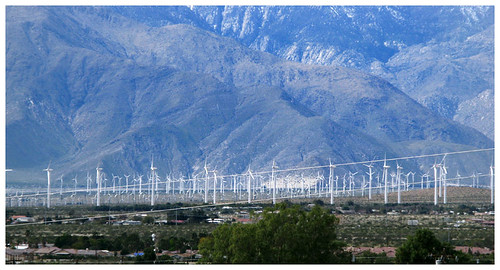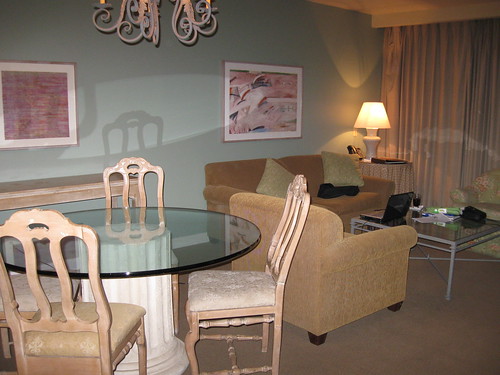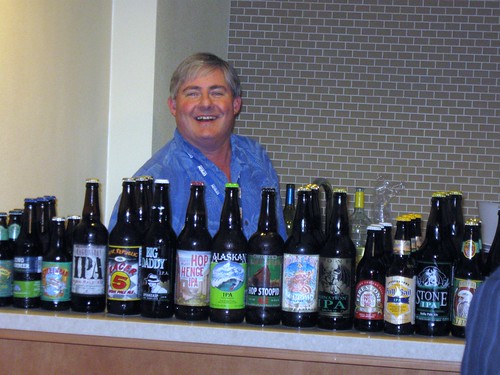CUE 2010: My Turn To Learn
I wasn’t sure quite what to expect from my very first CUE Conference experience as I approached Palm Springs in the early morning on Thursday, March 4, 2010.
What follows below is the good (and the not so good), the better, the best & even a few regrets.
The Good
I love that this conference is in Palm Springs which is an easy drive from the San Fernando Valley. I procrastinated enough deciding whether I was attending or not that I missed out on the less expensive conference hotels so I got on to Priceline and found something in the area. It turns out it was right across the street from one of the conference hotels and a short walk to the Convention Center and best of all it was just over $100 a night. Well more than that when you add in taxes, etc. but still about 1/2 of what I would have had to pay. Oh, and the room was HUGE with a living room, dining area, kitchen and a separate bedroom!
(And the NOT so Good)
Yes, nothing is all good:
- $2.50 for a can of Diet Coke?? Really?
- Spotty, slow and often non-existent wireless access
- Really busy slides with bad contrast & way too much text in a Keynote Address
- Teachers trying to figure out how to get out of attending any more sessions in the 2nd session of the conference. This just made me sad.
- A session that felt more like a commercial (with bad sound since you could barely hear the presenter) rather than inspiration and motivation to use their (free) resource.
The Better
The sessions!! What a treasure trove of ideas and inspiration. I want to implement everything now even though I know I can’t due to the constraints of the equipment we have in our computer lab. I am however already planning things that I can do in the upcoming weeks and mulling over ideas of how to take some things and tweak them so the will work on our equipment. Here’s just some of what inspired me:
Not the Same Ol’ PBL: Strategies from Kindergarten to College
Christy Keeler & Heather Rampton
The slides in the presentation that showed the correlation between Project-Based Learning Strategies, 21st Century Skills & NETS*S correlated were a light-bulb moment for me. I sometimes have a hard time deciding which NETS*S my lessons are addressing and this gave me some new ways to think about that. Session materials are supposed to be available on the CUE Community Ning but so far I haven’t found anything from this session. I did find an older blog post by Christy with this session’s information on it. If you download the CUE session slideshow you can see the correlations. I notice that some of the links on the blog post seem to be broken but some of them still work. I loved the idea of digital photography scavenger hunts and virtual museums and plan to use these soon.
Sharing Stories with Google Earth
Joseph Wood
I really, really, really wish our computers could run Google Earth but the wheels are already spinning in my head about how to do much of this with Google Maps or Scribble Maps. I love the idea of not just mapping things but telling a story with it and plan to put together and introduction of me for next year using Google Earth. I’ll have to run it on my laptop but it will work! It’s 4th Grade Mission time and my 8th Graders are going to be reading Johnny Tremaine as a class. I’m getting to work on some kind of mapping project for these this year. The resources from this session can be found at http://joewoodonline.pbworks.com/Sharing-Stories-with-Google-Earth.
Hidden Treasures in Your Curriculum: Using Geocaching to Motivate and Engage
Susan Anderson, Jim Holland
I haven’t ever done any geocaching but the ideas presented have the wheels turning. First I have to figure out how to get a few GPS units. They recommended the Garmin eTrex but said that any basic unit that showed your position in real time would work fine with students. The presentation on page on digitalgoonies.com has great basic information on how to use a GPS unit which would be great to use with students just learning how to use these. The Geocaching Activity Types on that same page has lots of really fun ideas of different things to do with students. This will be a next year thing I’m sure since I have no GPS units yet but I’m excited to try this myself and with students.
Podcasting with 70 Middle Schoolers–RU Crazy?!
Heather Wolpert-Gawron
I tried a little bit of podcasting with my 8th graders last year but I felt pretty disorganized doing it so this session was just what I needed. Heather went over the nuts and bolts of organizing tasks to create a regular podcast. I loved the idea of using a pocket chart to keep track of where in the process things are. I think part of my problem is that I only see my students twice a week for about 80 minutes total so it’s probably going to take us 2-3 weeks to produce a podcast even after the students are comfortable with the technology. The presentation materials are on Heather’s TweenTeacher web site. I just wish they were available in a format other than Keynote since I’m not on a Mac and don’t know of a free way to convert from Keynote to something I can use.
Google for Video
Jim Sill
This was a really fun session with lots of information. What a great idea to use Google’s Wonder Wheel to explore the connections to your subject and I loved the use of the drawing tool in Google Presentations to do storyboarding. How long has the drawing tool been there? And, Magic Auto Fill on Google Spreadsheets – love it! Guess I need to play with things more. The tip on embedding videos that you have uploaded to Google Docs was very cool. I hadn’t ever heard of http://www.freevideocoding.com. It was really inspiring to see the way Jim weaves Google tools like YouTube, Google Maps, Google Docs, Google Search, etc. into the video making process. I also discovered something about me and conferences – if a presenter doesn’t have a sense of humor an hour long session feels twice as long to me. I really appreciate anyone that can have fun with what they’re presenting. Check out Jim’s Google 4 Video page for more information and links.
The Best
How can anyone not love lesson planning with Chris Lehmann? Seriously, just being in the same room with him and his passion for education was an inspiration. One of the attendees at the session said that he’d never had so much fun planning a lesson and how true that was. I had read a little on Understanding By Design (UbD) and had wanted to attend Alice Mercer‘s Cue Unplugged session – Including Technology in your Unit Planning Using Understanding by Design (UbD) – but didn’t get to it. I have watched it since and with inspiration from Chris and Alice, I plan to dip my toe into the world of UbD and try some lesson planning this way.
Loved the closing Keynote by Carol Ann McGuire. Rock Our World is an amazing collaborative project and it was so inspiring to have the students & Petree end the conference with song.
But, by far the very best part of CUE was just being surrounded by all of the educators who are passionate about what they do and the students they teach. It was amazing (and more than a bit of an I’m not worthy moment) to meet and just hang out with some of the wonderful speakers and attendees at the conference. The conversations were never far away from how we can make education better for our students even during the social events such as IPABloggerCon or just wandering around in downtown Palm Springs. Thanks for the fun, the ideas and the conversations.
And, a Few Regrets
There were times I wanted to be two or three places at once but that just wasn’t possible – though I was able to catch a few archived sessions after the fact. I tried to choose my sessions based on things I want to do or need to do with my students. A couple of times that resulted in a session that wasn’t as motivating as I would have liked or that was just plain boring. I don’t know how to completely avoid that but next year I’d like to:
- Try to attend at least one session with every Spotlight Speaker. I didn’t do that this year and heard I missed some great sessions.
- Not be afraid to bail on a session if it’s not what I expected or if it’s just plain boring. I should have done that a couple of times this year.
- Attend sessions given by people that I know are wonderful presenters because I have learned that even if it’s on a subject I think I have mastered they will show me something new.
- Attend at least one workshop or seminar. I pay for conferences myself since there’s no budget for it at school and I just didn’t have the funds to pay for any of these this year. I really regret missing out on Rushton Hurley’s Flip Into Movie Maker workshop and Kyle Brumbaugh, Diane Main & Kenneth Shelton’s Google Workshop For Educators – Intermediate/Advanced (BYOL) seminar. Time to start saving for next year!
- Work the Exhibit Hall better. There were many give-aways to be had and I missed out on all but a couple. I used to be good at this when I went to construction and home building conferences years ago when I wrote software. Time to work that skill again.
This was definitely worth attending and I’m already planning for next year. I just wish there were some way I could make it to ISTE 2010 this summer.


